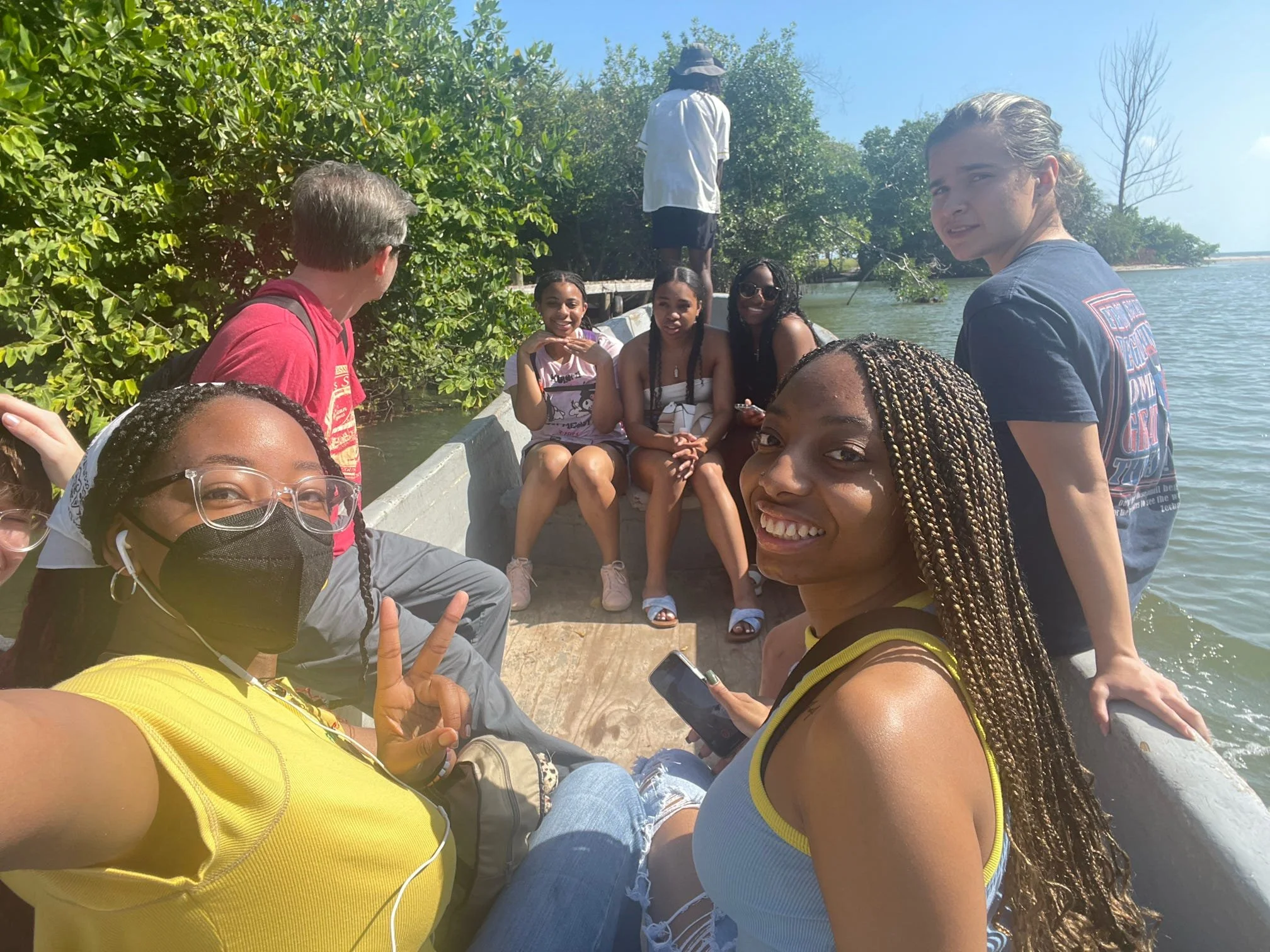Five Strategies to Reduce Racism in International Education
/by Makayla Vasek, Communications Specialist
2020 has been an eye-opening year for many Americans as social justice movements and the pandemic have underscored the racial discrimination that continues to perpetuate education, economic, and health disparities in the U.S. While some universities are responding to these movements by increasing resources for minority students, there has been little to no discussion devoted to the topic of racism in international education.
International Education in the U.S.
According to the Institute of International Education OpenDoors report, 1.08 million international students studied in the U.S. during the 2019-20 academic year, declining only by 1.8% despite the global coronavirus pandemic. Meanwhile, almost 350,000 American students studied abroad the year prior. While universities in the U.S. have progressively improved global connectivity on their campuses, there is a prominent racial disparity when it comes to sending students abroad. Currently, students of color represent only 30% of study abroad participants despite accounting for 45% of U.S. college enrollment as of 2018. Considering these statistics, efforts to diversify study abroad and discuss the implications that come with being a minority student in another country are still greatly underdeveloped on U.S. campuses.
What It Means to Be ______ Abroad
During the study abroad planning process, students are often so overwhelmed with booking flights, securing accommodations, succeeding academically, and making new friends that they have no time to consider what it means to be a specific race abroad. Similarly, most universities fail to prioritize the mental and emotional preparations students need prior to moving to a new community, especially if they suspect they will face racism.
Despite the racism in our own country, relative to most nations the U.S. houses a more diverse national and college population. In addition to considering our own racial disparities, it's important to identify the racial stereotypes and perceptions that exist in each student’s host country prior to travel, to ensure safety and a sense of belonging abroad.
How to Combat Racism in Study Abroad
As a proponent of cultural understanding and global citizenship, study abroad should be at the forefront of the antiracism movement yet has fallen short with discussion on racism abroad emerging only recently.
Unfortunately, we cannot control how people in other countries will treat American students. Many stories from students of color, however, suggest that their white counterparts, who represent 70% of U.S. study abroad, also perpetuate racism as they bring racial stereotypes from their home universities abroad. As we begin to understand the nuances of racism abroad, we’ve identified five steps to start combatting racism in international education from your home campus:
Acknowledge Racism in International Education
Because racism abroad is not regularly discussed prior to travel, students of color are often misinformed and disillusioned about what they are walking into when they sign up for a study abroad program. It is critical that universities re-think their pre-departure resources to include continual discussion on racism abroad as well as insights on how students can deal with discrimination.
One university that successfully educates about racism in international education is Agnes Scott College. As a women’s liberal arts college with a required Global Journeys immersion experience for first-year students, Agnes Scott College provides pre-travel workshops on topics such as traveling while Black, traveling while Muslim, etc. to teach students how to safely acknowledge and celebrate their identities abroad.
Provide Scholarships/Resources for Minority Students
Study abroad is based on the principle of tearing down cultural barriers and creating a global community. But, in order to create a truly global world, study abroad cannot be attainable by only white students. Because money can be a significant barrier for minority students, providing scholarships can help diversify study abroad.
The University of Texas at Austin takes a unique approach to diversity scholarships by recruiting through first-generation student organizations to improve diversity in every sense of the word: race, ethnicity, age, major, etc. When study abroad is more diverse, conversations about discrimination abroad and allyship will become more commonplace naturally, creating an atmosphere of cross-cultural understanding and collaboration.
Diversify Study Abroad Faculty
Fostering an anti-racist study abroad community starts with diversifying its participants and perspectives. In order to naturally diversify student participation, Professor Arthur Joyce at University of Colorado Boulder runs programs by a diverse group of educators. Rather than rely on his one perspective, Joyce collaborates with colleagues and his global connections to teach through various lenses.
This strategy can include gathering U.S. faculty leaders from diverse backgrounds and areas of expertise as well as partnering with faculty and community members within the host country. When students share identities with the faculty leaders and program guides, they feel more inclined to participate themselves, which establishes a welcoming environment in which students of color experience a greater sense of belonging abroad.
Share Study Abroad Stories by Students of Color
Another way to give students peace of mind prior to travel is to share the numerous stories by students of color who have already participated in study abroad. The challenges they face and overcome as well as their perspectives on cross-cultural conversations can assure students that race is not a barrier to traveling abroad.
Diversity Abroad’s Abroad360° is an online platform for student advising and success stories. This campaign features a number of micro-modules covering topics such as Being a Student of Color Abroad and Allyship for Diverse Peers Abroad. Additionally, their Living Abroad blogs feature students’ stories on traveling abroad with certain identities including Students of Color in Ireland, LGBTQIA+ Students in Costa Rica, Religious & Spiritual Students in South Africa, etc.
Teach Anti-Racism Abroad
Study abroad provides an incredible opportunity for education outside of the classroom and outside of a student’s comfort zone. Furthermore, while abroad students can take a more critical look at their home country, state, city, and community. This opportunity to open students' eyes to racism at home and abroad should not be missed by educators and faculty leading short-term programs.
Colonialism and economic inequality are just two of the frequently discussed topics in study abroad that dovetail perfectly into a discussion of racism. Program providers, like Learn from Travel, can facilitate these challenging conversations during the most appropriate moments.
Beyond these initial steps to counter racism in international education, the best way for individual faculty leaders and students to prepare to go abroad is to understand the host culture’s history as well as its current racial makeup and perceptions. As we aim to make study abroad more inclusive, showing an understanding of others will inherently cause them to take a deeper look at their own biases and stereotypes and reevaluate their perceptions.















